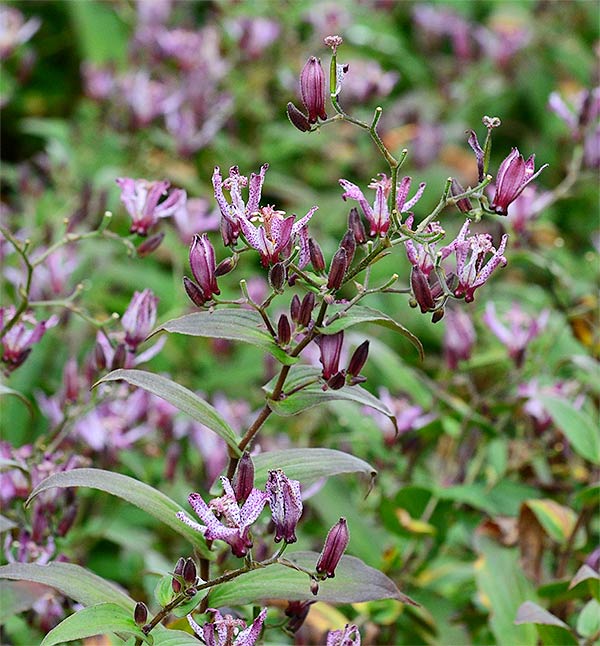Unusual Blooms Punctuate End of Season
This article was first published on 15 May 2015.

Tricyrtis macropoda
All toad lilies are late bloomers. Just as the last flowers of most perennials are fading or even dying back for the season, Tricyrtis macropoda are starting to bloom. This plant is valued at Dunedin Botanic Garden for its appealing, late season flowers.
Tricyrtis are commonly known as toad lily, due to spots on the flowers which are supposed to resemble spots on a toad - not surprising as these plants are in the lily family, Liliaceae.
Native to southern China, Tricyrtis macropoda grows on forest margins and grassy slopes, often near streams.
Reaching a height of about 1m when in flower, it slowly spreads by rhizomes, and over time will colonise a desired area. Size can be contained by slicing a spade into the surrounding ground every few years – this will sever the rhizomes.
Although considered a shade loving perennial, it will actually tolerate a range of conditions, coping with open sunny situations. It also seems to be able to cope with a wide range of soils from quite heavy clay through to open, free draining soil, providing there’s plenty of rainfall.
Right at home in a woodland garden, it’s just as happy in the herbaceous or mixed border, extending flowering displays well into the autumn months. Plant near the front of a border so the unusual flowers can be easily viewed.
Tricyrtis macropoda can be seen at Dunedin Botanic Garden beside the pergola when entering the Otaru Teien.
Stephen Bishop is curator of the Otaru Teien at Dunedin Botanic Garden.


